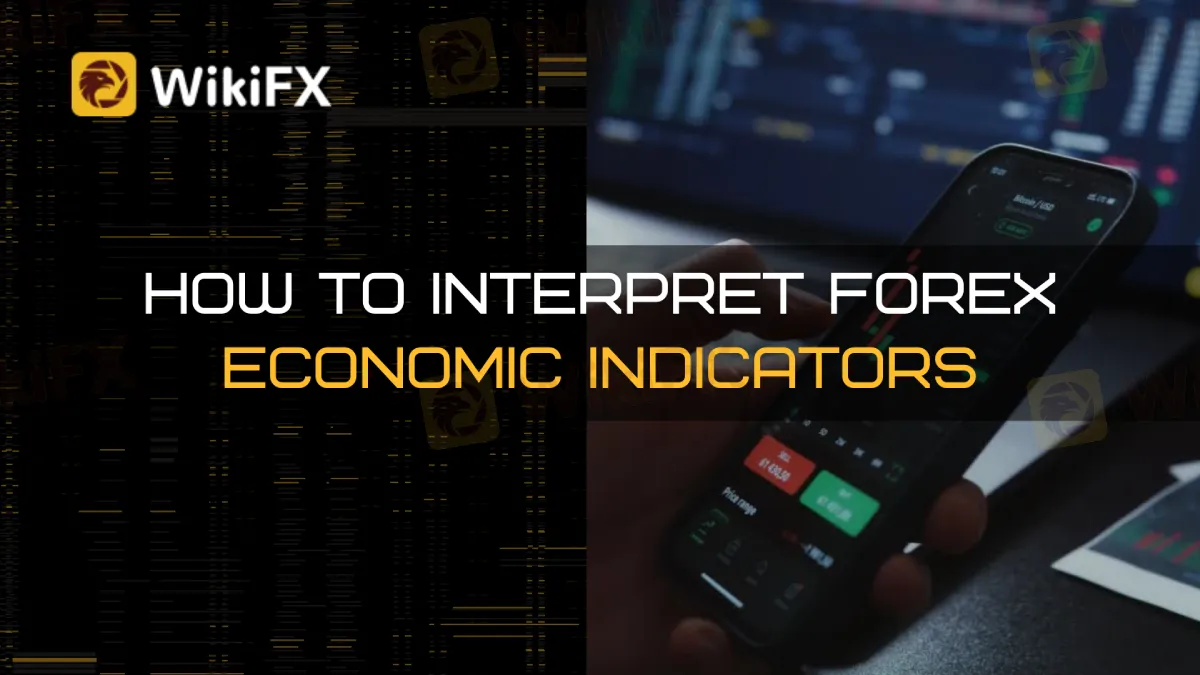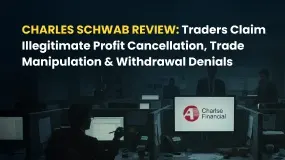简体中文
繁體中文
English
Pусский
日本語
ภาษาไทย
Tiếng Việt
Bahasa Indonesia
Español
हिन्दी
Filippiiniläinen
Français
Deutsch
Português
Türkçe
한국어
العربية
How To Interpret Forex Economic Indicators
Abstract:The beliefs of forex traders as a whole could affect how prices change and how the market moves. Therefore, it is a crucial factor in commercial decisions. When trading on the foreign exchange market, traders need to know how the market feels because that can help them predict price changes.

The collective thoughts of forex traders may influence how prices move and how the market functions as a whole. As a result, it is an essential consideration in trade choices. Thus, forex market sentiment reflects market sentiment and assists traders in predicting price movements.
If the majority of forex traders anticipate that a currency will appreciate, they will likely purchase more, pushing prices upward. When prices rise, it indicates a positive market.
If the bulk of forex traders anticipate that a currency will decline, they will likely sell more, pushing prices down. When prices decline, it indicates a gloomy market.
Since the mood of the forex market depends on how investors feel as a whole, it can be hard to predict and judge. However, traders may use a variety of indicators to gauge the market mood. Fair Forex talks about three signs that traders can use to help them make decisions.
Price, Momentum, and Volume Indicator 1
Traders don't have to look far to get a sense of market emotion—pricing, momentum, and volume all have their own tales to tell.
Prices
Price fluctuation represents a trader's attitude toward a certain currency pair.
If the market moves swiftly upward but slowly downward, it means that the base currency is stronger than the quote currency. Overall, this shows that the market is positive. If the opposite occurs, the moves indicate a negative market attitude.
Momentum
Price momentum may indicate whether the side of the market (bulls or bears) is now in control. “Bulls” are bullish investors who believe that prices will increase. Bears are pessimistic investors that anticipate price declines.
When prices are ranging, lower highs on the currency pair may suggest that bulls are losing momentum.
When prices are ranging, greater lows on the currency pair may suggest that the bears are losing momentum.
If the price of the currency pair goes up and down in the same way, it could mean that both bulls and bears are strong.
Volume
Trading volume data can't tell you where the market is going, but it can show you how interested traders are. Lower trading volume may signal declining interest in a certain currency pair.
A bigger volume, on the other hand, indicates more interest. Also, when more transactions happen, it's usually a sign that the price will start moving in a certain direction.

The CBOE Volatility Index is the second indicator.
The Chicago Board of Options Exchange's (CBOE) Cboe Volatility Index measures the volatility of a group of S&P 500 options. Traders refer to it as the “VIX,” and it may assist them in determining how the market thinks about currencies and currency pairings that are highly tied to the S&P 500.
High volatility may indicate market pessimism and that the bulk of traders is unsure about the long-term health of specific currencies. In fact, the VIX is sometimes known as the “fear gauge” since high volatility indicates that most traders are concerned that a trend may shift.
Consider the US dollar (USD), the world's most traded currency. The USD has a high correlation with the VIX. High volatility in the VIX might indicate skepticism about the USD's strength.
The NASDAQ Composite Index is the third indicator (VXN)
The NASDAQ Volatility Index (VXN) is similar to the VIX in that it reflects price volatility expectations; however, this time it monitors price volatility among the NASDAQ 100 stocks, which include the top 100 non-financial securities in the United States and internationally by market capitalization.
It advises traders on what to anticipate from the economy and, by extension, the NASDAQ market over the next 30 days as a gauge of how the market feels. It, like the VIX, measures the amount of uncertainty felt by traders. Pessimism may be indicated by high volatility.
Because technology accounts for over half of the VXN, it is highly tied to currencies from technology-driven economies, such as the USD and the Japanese Yen (JPY). In fact, USD/JPY tends to move in tandem with VXN sentiment.
Traders use a combination of these methods to determine how the market is feeling and, as a consequence, how to organize their trading tactics. A smart trader doesn't rely on just one set of many evaluations; instead, they look at many different measures at the same time.
At Fair Forex, professionals have access to a variety of tools that help them figure out what the best thing to do is. In addition, our forex brokerage offers some of the finest rates, charges, and spreads on the market.
Keep an eye out for more WikiFX Forex news.
To stay up to speed on the latest news, download the WikiFX App from the App Store or Google Play Store.

Disclaimer:
The views in this article only represent the author's personal views, and do not constitute investment advice on this platform. This platform does not guarantee the accuracy, completeness and timeliness of the information in the article, and will not be liable for any loss caused by the use of or reliance on the information in the article.
Read more

Charles Schwab Review: Traders Claim Illegitimate Profit Cancellation, Trade Manipulation & More
Have you been lured into the Charles Schwab app for trading on the back of outrageous profit claims by the broker? Did you fail to receive any of these? Does the broker deny withdrawals every time you request and cancel your forex trading account? Have you been victimized financially by its trade manipulation? Act before you are left with a NIL balance in your account. Many traders have questioned Charles Schwab customer service and many other operational executives for the aforementioned illegitimate trading activities. In this Charles Schwab review article, we have shared some of their comments. Read on!

AMP Futures Exposed: Traders Raise Alarms Over Illegitimate Account Blocks & Bad Customer Service
Has AMP Futures blocked your forex trading account? Does it fail to provide any explanation for this act? Do you face issues concerning deposits to your AMP Futures account? Is the customer service non-existent for any trading query you raise with it? You are not alone! Many traders have been facing these issues upon AMP Futures login. Some of them have commented on AMP Futures review platforms. In this article, we have shared some reviews that you can look at. Read on!

FXGlory Review: Vanishing Profits, Capital Scams & Withdrawal Charges Keep Annoying Traders
Does FXGlory remove all your forex trading account balances upon fund withdrawal requests? Or do you witness incorrect trading account balances after fund withdrawals? Does the Saint Lucia-based forex broker charge you for fund withdrawals? All these and many more scam-related complaints have been filed against the forex broker. In this FXGlory review article, we will discuss several complaints. Read on!

PINAKINE Broker Review: A Complete Look at Its Services and Risks
Finding a trustworthy broker from the huge and often confusing world of online trading options is one of the biggest challenges a trader faces. In this competitive market, PINAKINE Liquidity Limited has appeared, getting attention with promises of high leverage and zero-commission trading. However, a closer look shows important factors that every potential client must think about before investing. The most important thing to consider with PINAKINE is that it has no regulation. This fact completely changes how risky the broker is and has major effects on how safe your investments will be. This review gives a complete and fair examination based on information available to the public. We will break down its services, trading conditions, platform technology, and the possible risks involved, helping you make a fully informed decision.
WikiFX Broker
Latest News
Stonefort Securities Review: A Fair Look at Safety, Rules, and What Traders Say
Trump asks for meat packer probe over beef prices
Voices of the Golden Insight Award Jury | Tim Waterer, Chief Market Analyst of KCM Trade
BASF CEO: EU CO₂ Trading Is A "Destruction Mechanism" For European Industry
Prop Firm Scams: When ‘Getting Funded’ Costs You Everything
PINAKINE Broker Review: A Complete Look at Its Services and Risks
One-Click Access to Broker Official Group Chats & Exclusive VPS Benefits
Consumer sentiment nears lowest level ever as worries build over shutdown
Uniglobe Markets MT4 Review: A Complete Look at Features, Costs, and Important Safety Issues
Is PINAKINE Broker Safe or a Scam? A 2025 Complete Review
Currency Calculator




